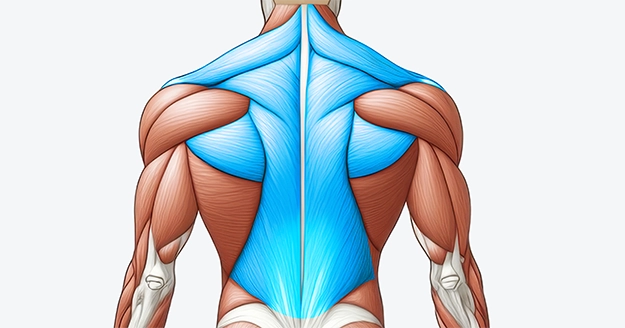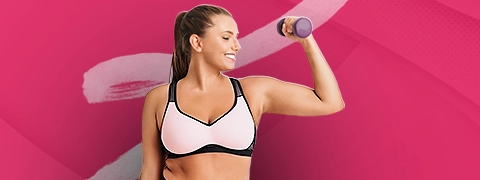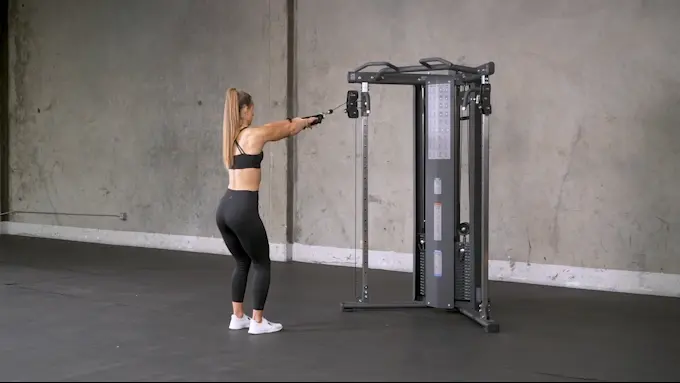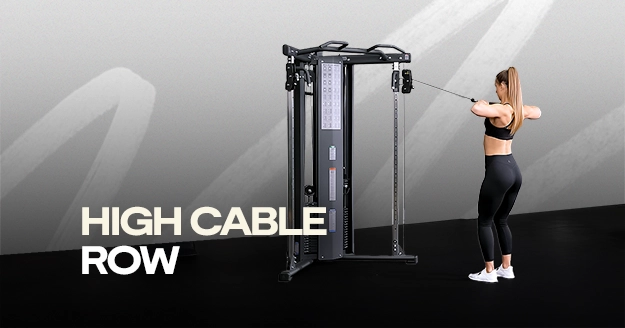Exercise Profile
High Cable Row Overview
The high cable row is a highly effective exercise that strengthens the upper back and improves posture and pulling power.
The high cable row is accessible to a wide range of fitness levels. Beginners can start with lighter weights and focus on mastering form, while experienced lifters can increase resistance or vary their grip to intensify the workout.
Incorporating this exercise into your routine builds a bigger back, enhances scapulohumeral rhythm, improves strength, and contributes to a more balanced and athletic physique.

High Cable Row Instructions
Step 1: Attach the D-handles at head level and select the resistance. Holding onto the handles, stand with your legs slightly bent and hip-width apart.
Step 2: Keep your chest high and put some tension in your arms. Engage your core.
Step 3: Pull the handles toward your chest while bending your elbows sideways with control. Bring your shoulder blades together while keeping your chest out.
Step 4: Reverse your movement by slowly extending your arm forward and slightly overreaching to stretch your upper back.

Common High Cable Row Variations
Here are some common variations of the high cable row, each with unique benefits and adaptations:
High Cable Row Tips
- Keep your back straight and chest lifted throughout the movement to allow the shoulder blades to move optimally.
- Protract your shoulder blades as you extend your arms to stretch the target muscles better.
- Retract your shoulder blades to fully contract the traps and rhomboids for better activation.
High Cable Row Common Mistakes
- Incorrect Elbow Position: Keeping your elbows too low will change the muscles emphasized during the exercise.
- Letting the Weight Pull You Forward: Your shoulders and lower back may be strained if you start by letting the weight drag your body forward.
Frequently Asked Questions
How is the high cable row different from the low cable row?
Because the cable is pulled from a higher position, the high cable row focuses more on the muscles in the upper back. The low cable row, where the cable is pulled from a lower anchor point, emphasizes the middle back and lats.
How heavy should I lift?
Select a weight that will push you while still enabling good form. Start with a moderate weight and prioritize technique over heavy loads. Slowly raise the resistance as you gain confidence and strength.
Can I do the high cable row at home?
The high cable row may be done at home if you can access a cable machine or resistance bands with an anchor point. Resistance bands offer a practical alternative, though they may not provide consistent tension like a cable machine.
Post your post-workout selfies in IG and tag @trainestapp, #trainest, or DM them to us to get a shoutout on Trainest Stories!


